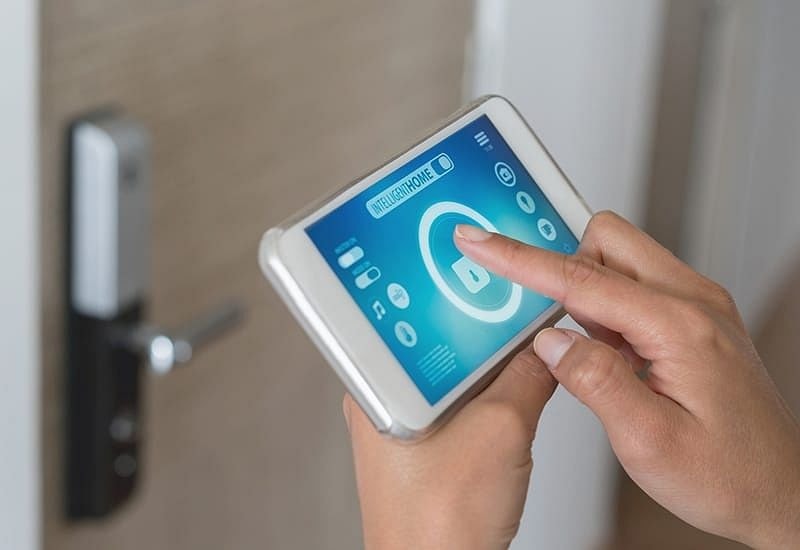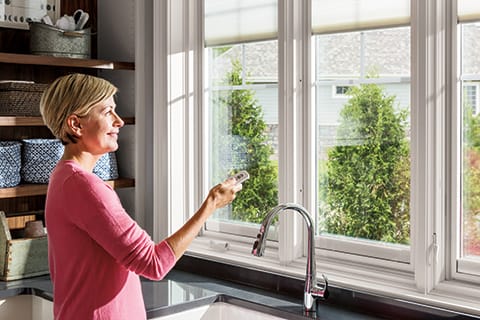8 Ways to Integrate Smart Home Technology
Posted
on December 13, 2017

The idea of a smart home has shifted from futuristic to practical. Today, more and more homeowners are embracing technology that integrates into their homes. Integrating technology into your home can help provide enhanced security and functionality and today’s smart home technology is being built into existing everyday items meant to blend seamlessly or complement the existing design of your home, instead of distracting from it.
Smart home technology can help you control comfort measures within your home and also monitor and control your house remotely. The 2016 U.S. Houzz Smart Home Trends Survey reports that 45 percent of renovating homeowners are installing smart systems or devices that can be monitored and/or controlled by a mobile device.
Designers and builders are also taking smart home technology into account as they plan new products and work on house projects. Here are eight popular smart gadgets that can enhance your home.
Popular Smart Home Technology
1. Smart thermostats
When you think of smart home technology, this might be the first thing that comes to mind. Smart thermostats typically connect to your home’s Wi-Fi network, allowing you to set and control your home’s temperature from anywhere. Some models detect motion in order to adjust temperatures according to your “home” and “away” settings.
2. Automated or connected home lighting
Through smart bulbs or lighting hubs, you can control your home’s lighting through an app, which can help you conserve energy in addition to giving you greater flexibility. These smart lightbulbs don’t look much different from normal lightbulbs, allowing you to install them in existing lighting fixtures.
3. Wireless charging
Charging personal electronics has become part of our everyday lives. Now that some personal electronics like phones and watches can charge wirelessly, it helps eliminate the need for cord storage and allows more flexibility. Companies are finding new ways to integrate wireless charging pads into furniture and home accents to blend seamlessly with your existing decor. Rather than having to plug your phone into a cord connected to the wall, you may be able to simply set it on a side table with a charging pad built in.
4. Window sensors and security sensors
Perhaps one of the most attractive benefits to smart home technology is enhanced security. Smart security sensors can show the status of your windows, doors, and garage doors, and let you check if they’re closed or open.
A recent survey revealed that 75 percent of people weren’t confident whether or not they remembered to lock their doors. With security sensors, you won't have to wonder whether or not you locked your front door. Instead, you can check the status through a connected device. Along with helping you remember if you locked them or not, some sensors may also help alert you of unauthorized entry. Some sensors can be installed during manufacturing, so as not to impact your window or door warranty. They’re also tucked away out of sight to preserve the beauty and appearance of your windows and doors.

5. Motorized blinds and shades
Specialized between-the-glass blinds and shades are motorized through a remote to raise, lower, or tilt. Motorized blinds can also be programmed to raise or lower depending on the time of day, letting in natural light or automatically creating privacy when you want it.
6. Water saving faucets and showers
Smart homes are about more than just technology. New, highly efficient faucets, fixtures, and showers are becoming popular with homeowners. These water saving faucets can help conserve water use, which can also reduce water heater use and energy.
7. Smart smoke and carbon monoxide detectors
Smart smoke detectors connect to your home Wi-Fi network and can alert you when they go off or when the batteries are almost drained. Some of these smart smoke detectors also have carbon monoxide sensors installed that can tell you if and where carbon monoxide is detected. This not only lets you respond to alarms faster, but it also helps you turn the alarm noises off quicker as well.
8. Smart hubs
A smart hub, or home automation hub, is a network device that allows you to connect one or more devices for centralized control. As you add multiple smart home gadgets, a smart hub is what pulls everything together into one place. This makes it easier to manage smart features, and control everything from a centralized component.
As technology advances and smart home designs and smart gadgets improve and expand, homeowners gain more control over the security, convenience, and design. These tools can help give homeowners peace of mind, enhance home comfort, increase energy efficiency and additional security without sacrificing their home’s aesthetic appeal.
Pella’s Insynctive technology allows you to easily manage and control your smart home with sensors and features that give you the flexibility you need. See how Insynctive works.
Schedule a free consultation to find windows and doors for your home.
